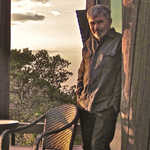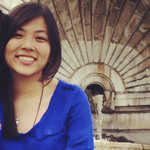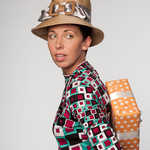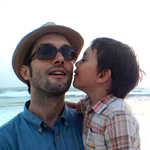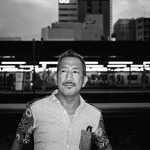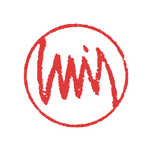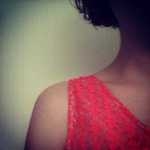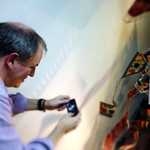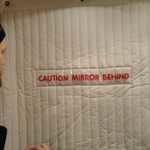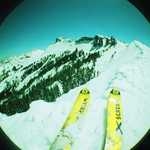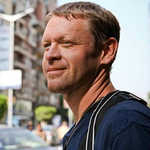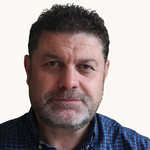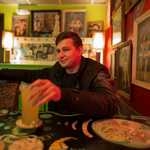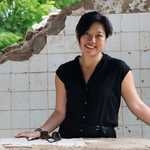That’s about the same as the distance between Berlin and Templin, or London and Brighton, or halfway from Manhattan to the Hamptons. Getting to Hebron from Tel Aviv by public transport takes about two hours via two stops, Jerusalem and Bethlehem, and costs roughly 40 shekels, or 8 Euros. No passport controls are involved. You use the same currency and the same mobile operators.
Yet when you tell a Tel Aviv resident that you’re planning to go to Hebron, they look at you as if you’d told them you’re off to the Sinai pensinsula tomorrow: with a mix of alarm and incredulity. Why would anyone think of doing such a thing, especially if the Dead Sea is so much nicer?
Hebron is the largest city in the West Bank and the second largest in the Palestinian territories, after Gaza. It consists of about 170,000 Palestinians and somewhere between 500 and 800 Jewish settlers, who in turn are protected by a large number of Israeli soldiers.
Yet when you enter “Hebron” into Google Maps in Tel Aviv, it gives you five results before suggesting Hebron, the city. When you enter it into Booking.com, it suggests Hebron, Kentucky; Hebron, Ohio; and the Vall d’Hebron in Barcelona. This blogging platform doesn’t recognise the location. There are very few indicators that you can actually go to Hebron. And that’s a shame.
Hebron is a divided city, split into one side controlled by Israelis and another governed by the Palestinian Authority. It’s also the site of Israeli settlements that are considered illegal by the international community. The first and largest, Qiryat Arba, was established in 1968 and has metastasised, over the following decades, in highly fortified specks in the middle of the densely packed Old City. Palestinians aren’t allowed to drive or use certain streets in the Israeli-controlled part of the Old City; official signs at the entrance to the Palestinian-controlled part warn Jews that access is forbidden to them at the risk of death.
The Palestinians and Israelis use the same currency and mobile phone networks. They get around by very similar modes of transport and eat very similar food. They are both extraordinarily welcoming, curious and sociable. They tell the same stories, but with different emphasis.
“They claim we massacred them in 1929,” a Palestinian will say. “There was a massacre, but it was by radical outsiders, and Palestinians in the Old City actually hid Jews, risking their lives.” “They massacred us in 1929,” a Jewish settler will say. “Women, children, the elderly – everyone. There was one guy, a mensch, who hid some Jews. They slashed his hands. It was awful.” 1929, in Hebron, is not very long ago at all.
The linear distance between Tel Aviv and Hebron is 68.5km, yet the two cities might just as well be on different planets. It’s as if the air pressure were different. Everything that is light, bright and carefree in central Tel Aviv is heavy, dense and tense in Hebron’s Old City. Hebron feels claustrophobic. Walk through the market and you’re watched from above by IDF soldiers with machine guns. Turn a corner and you’re stuck in the turnstile of an Israeli checkpoint, trying to catch the attention of the soldier on the other side so they release it. Stand on a rooftop and you see the the Israeli military outposts on the surrounding hills, wary eyes and loaded guns pointed at you. That people should try to lead normal lives in this situation seems like an outrageous idea.
Travel back to Tel Aviv – two hours, three bus rides, 40 shekels, one passport control – and you slowly feel the weight lifting off your heart. You dive back into the warm, carefree bubble, order a frozen yoghurt, have a drink. The feeling vanishes so quickly, it feels like waking up from a dream – not quite bad, but uncomfortable, somehow hopeless.
The settlements in Hebron, some Israelis say, are a divine and historic right. The settlements in Hebron, other Israelis say, provide control and the means to prevent further terrorist attacks. The settlements in Hebron, the Palestinians say, are evidence of an apartheid regime that breeds ever more hatred. The settlements in Hebron, most young Tel Avivians say, are something they don’t even want to think about, because three years of military service is all the West Bank experience you need in a lifetime.
And who can blame them? But you, you should go.
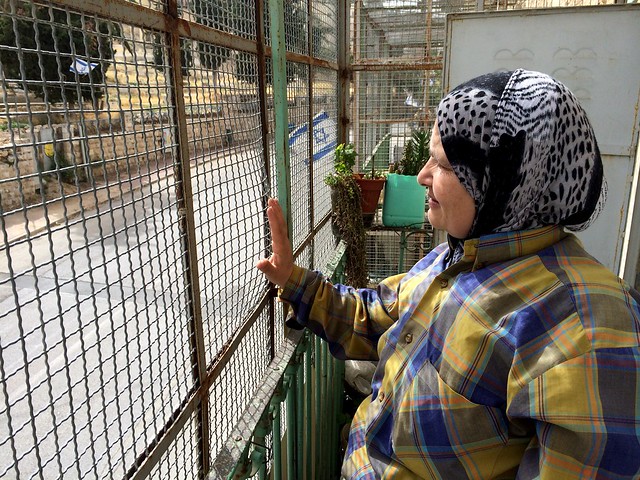 Zleikha Muhtaseb is a Palestinian nursery school teacher and human rights activist. She shares an apartment with her mother in the Old City of Hebron, in the same building that houses the Christian Peacemaker Team. It looks out over Shuhada Street, a central and formerly busy thoroughfare that has been closed off to Palestinians since it leads to several Jewish settlements. The apartment is cheap; Zleikha pays only a few hundred dollars a year in rent. That’s because all residents have had to put up mesh wire on their windows and balconies to protect themselves from settlers throwing stones. The bulge she has her hand on was a particularly big one, Zleikha says.
Zleikha Muhtaseb is a Palestinian nursery school teacher and human rights activist. She shares an apartment with her mother in the Old City of Hebron, in the same building that houses the Christian Peacemaker Team. It looks out over Shuhada Street, a central and formerly busy thoroughfare that has been closed off to Palestinians since it leads to several Jewish settlements. The apartment is cheap; Zleikha pays only a few hundred dollars a year in rent. That’s because all residents have had to put up mesh wire on their windows and balconies to protect themselves from settlers throwing stones. The bulge she has her hand on was a particularly big one, Zleikha says.
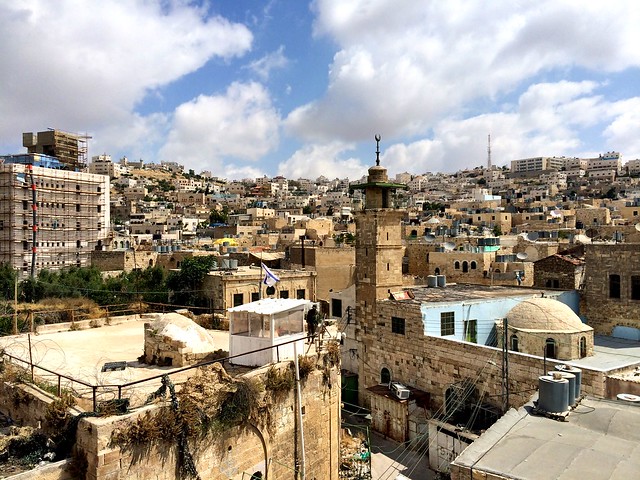 From the roof of Zleikha’s building one can see one of the Israeli Defense Forces (IDF) watchtowers that dot the Old City. The building it stands on is empty. It serves as a buffer between Palestinian housing and a Jewish settlement.
From the roof of Zleikha’s building one can see one of the Israeli Defense Forces (IDF) watchtowers that dot the Old City. The building it stands on is empty. It serves as a buffer between Palestinian housing and a Jewish settlement.
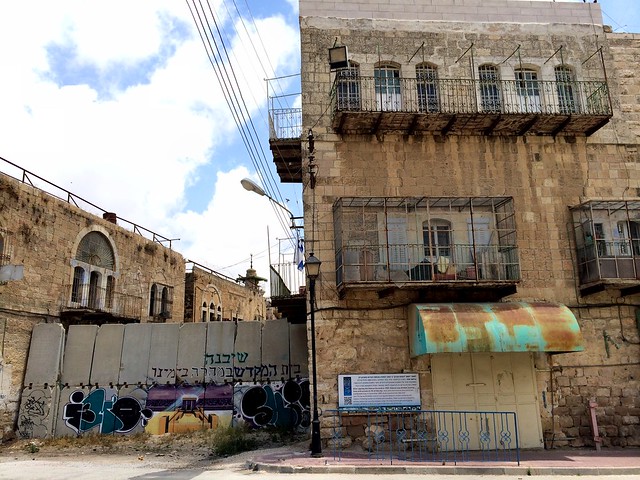 A view of Shuhada Street and Zleikha Muhtaseb’s house that Zleikha herself, or any other Palestinian, never sees.
A view of Shuhada Street and Zleikha Muhtaseb’s house that Zleikha herself, or any other Palestinian, never sees.
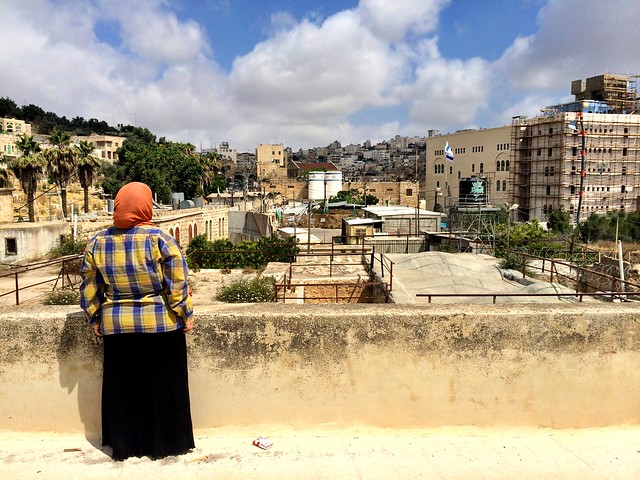 Zleikha on her roof, looking at a Jewish settlement less than a hundred metres away. The Israeli flags adorning settlements and IDF bases are the only ones in the Israeli-controlled part of the city. Palestinian flags are forbidden.
Zleikha on her roof, looking at a Jewish settlement less than a hundred metres away. The Israeli flags adorning settlements and IDF bases are the only ones in the Israeli-controlled part of the city. Palestinian flags are forbidden.
 The market in the Old City of Hebron was covered with mesh to protect Palestinians from waste thrown down from the Jewish settlement that flanks it on the south side, the right in this picture. Sometimes, settlers throw water mixed with bleach or urine, market stall owners say – a claim I can’t verify. IDF soldiers watch the market from several towers above the street.
The market in the Old City of Hebron was covered with mesh to protect Palestinians from waste thrown down from the Jewish settlement that flanks it on the south side, the right in this picture. Sometimes, settlers throw water mixed with bleach or urine, market stall owners say – a claim I can’t verify. IDF soldiers watch the market from several towers above the street.
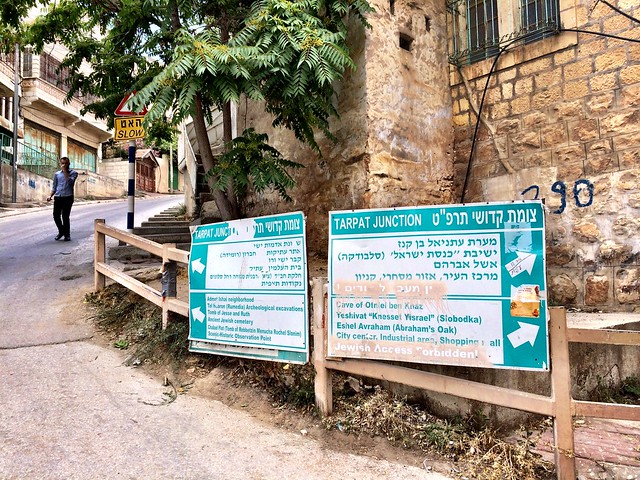 Signs on the northern end of Shuhada Street, where the ban on Palestinians using the street ends. The sign on the right points towards a checkpoint that marks the border between the Israeli and Palestinian-controlled parts of the city.
Signs on the northern end of Shuhada Street, where the ban on Palestinians using the street ends. The sign on the right points towards a checkpoint that marks the border between the Israeli and Palestinian-controlled parts of the city.
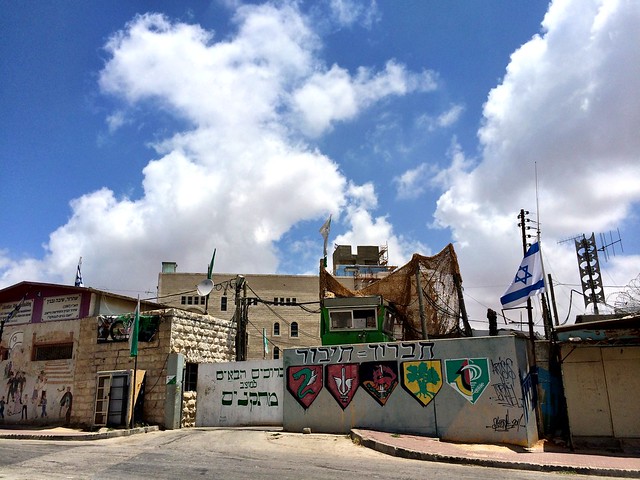 A Jewish settlement on Shuhada Street. Several settlements and small IDF military bases I’ve seen on the way look remarkably like pirate forts as imagined by children.
A Jewish settlement on Shuhada Street. Several settlements and small IDF military bases I’ve seen on the way look remarkably like pirate forts as imagined by children.
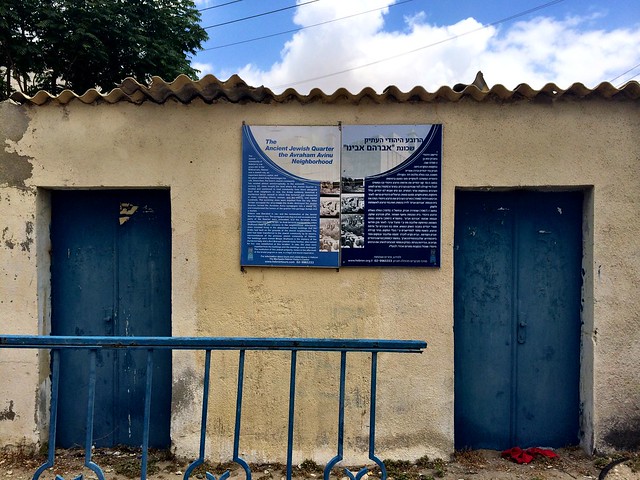 One of the many signs put up by settlers relating the Jewish heritage of the neighbourhood and atrocities committed by Arabs. The propaganda on both sides can feel crude, like two divorced parents trying to indoctrinate their child of the wickedness of the other party.
One of the many signs put up by settlers relating the Jewish heritage of the neighbourhood and atrocities committed by Arabs. The propaganda on both sides can feel crude, like two divorced parents trying to indoctrinate their child of the wickedness of the other party.
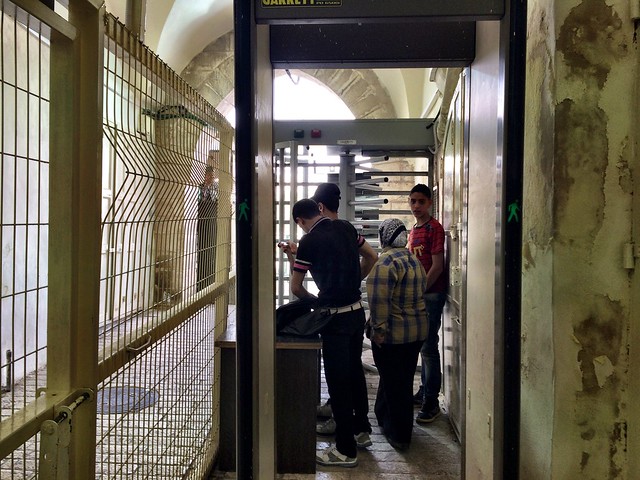 The checkpoint at the end of the market in the Old City, leading to the Cave of the Patriarchs, a site holy to both Muslims and Palestinians and under shared (if strained) control. This being a central access point in the Old City, Palestinians often pass through it several times a day, and especially boys (who are subjected to stricter controls than women) make a point of making the metal detector go off several times before they surrender their mobile phones, belts and coins. The young IDF soldiers and Palestinians communicate in English.
The checkpoint at the end of the market in the Old City, leading to the Cave of the Patriarchs, a site holy to both Muslims and Palestinians and under shared (if strained) control. This being a central access point in the Old City, Palestinians often pass through it several times a day, and especially boys (who are subjected to stricter controls than women) make a point of making the metal detector go off several times before they surrender their mobile phones, belts and coins. The young IDF soldiers and Palestinians communicate in English.
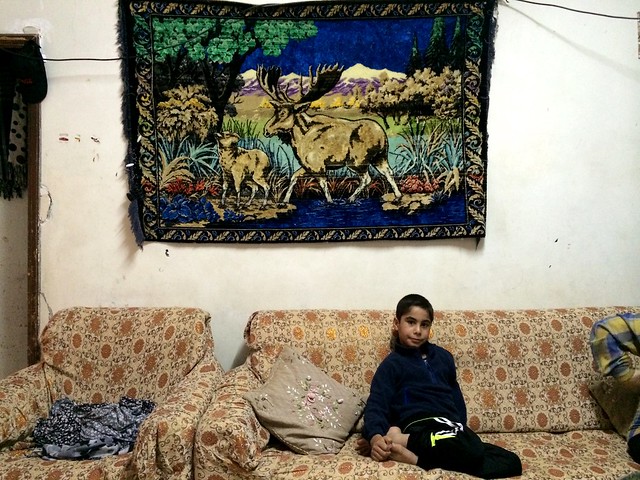 This is Youssef. I met him in his home, which he shares with his deaf mother and sometimes with his father, who smuggles alcohol into Hebron. They are the only remaining residents of a building right at the entrance to a Jewish settlement. You can read Youssef’s story here.
This is Youssef. I met him in his home, which he shares with his deaf mother and sometimes with his father, who smuggles alcohol into Hebron. They are the only remaining residents of a building right at the entrance to a Jewish settlement. You can read Youssef’s story here.
Filed Under
Other moments in Somewhere
-
meep.
in Somewhere, High Seas -
Test start i asd asdasda sdas das das das d
in Somewhere, High Seas -
I awake. Prepared for traveling Astral like beyond my thoughts. Oceans of consciousness awaits. I. am. Indivisible.
in Somewhere, High Seas -
Let it play
in Somewhere, High Seas -
Ameer
in Somewhere, High Seas -
Water, water, everywhere, and nothing decent to drink.
in Somewhere, High Seas -
In every need
in Somewhere, High Seas -
Love has its own tale to tell, beyond words and speech.
in Somewhere, High Seas -
So do not try to find flaws in His work,His mastery is in human bones and flesh.
in Somewhere, High Seas


